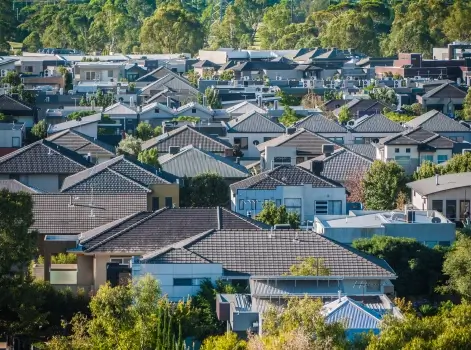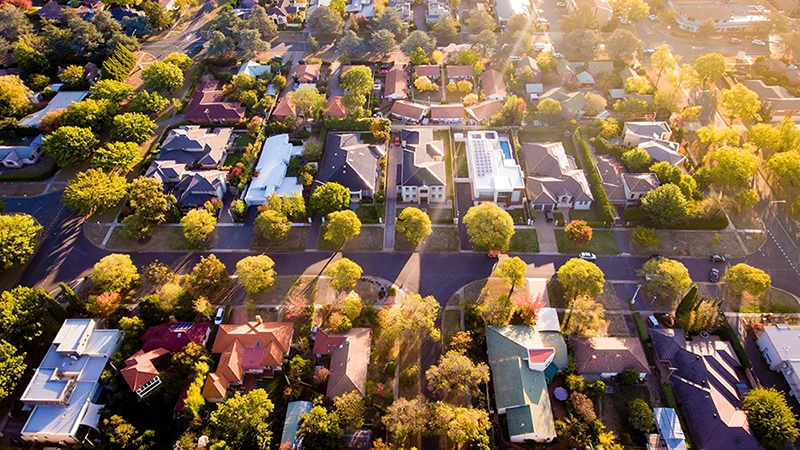Updated: 27 Dec, 2024
CoreLogic’s Home Value Index recorded a fifth straight month of decline in September 2022, falling 1.4%. While housing values trended lower, the rate of decline did ease from August 2022’s 1.6% fall.
Adelaide and Perth experienced a mild reduction in their values of 0.2% and 0.4%, respectively. Sydney’s monthly rate of decline eased from 2.3% in August to 1.8% in September, Melbourne’s declined from 1.2% to 1.1%, while Brisbane’s declined from 1.8% to 1.7%. Darwin is the only capital city whose housing values have not started to trend lower but were still 10.1% below their 2014 peak.
CoreLogic research director Tim Lawless said it’s too early to suggest that the housing market has come off the worst of the downturn. “It’s possible we have seen the initial shock of a rapid rise in interest rates pass through the market and most borrowers and prospective homebuyers have now ‘priced in’ further rate hikes. However, if interest rates continue to rise as rapidly as they have since May, we could see the rate of decline in housing values accelerate once again.”
Where Did Housing Values Decline The Most?
After rising 25.5% over the recent growth cycle, housing values across the combined capital index were 5.5% below the recent peak – in dollar terms, down $46,100.
The combined regional index, which recorded even stronger growth through the upswing, peaked two months later than the capital cities; regional property values were down 3.6% through the end of September 2022 – or $21,700 in dollar terms.
Although Sydney’s rate of decline eased in September 2022, the city continued to record the largest fall, with housing values now 9% – or $104,300 – below the peak in January 2022. After a later peak and subsequent beginning to its slide, Brisbane’s monthly rate of decline was 4.3% – or $33,600 – below its June peak.
There was still a buffer between housing values and where they were at the onset of the pandemic. At the combined city levels, housing values would need to fall 13.5% before the gains of the recent growth cycle would be wiped out. “We are still seeing some resilience to value falls around the more affordable areas of Adelaide and Perth, as well as some regional markets associated with agriculture, mining and tourism,” Lawless said.
Sydney’s northern beaches and Warringah, Pittwater and Manly experienced falls of 14.5% after a peak in early 2022. “These areas saw housing values rise between 38% and 62% through the growth cycle, so most homeowners are still ahead in terms of equity in their home,” Lawless said.
Property Market Highlights
Australia’s spring selling season experienced a slow start. The number of new listings added in the capital city markets over the four weeks ending 25 September was 12% lower than the same period a year ago and 10% lower than the previous five-year average. Only Darwin and Canberra recorded a higher than average flow of new listings over the past four weeks.
“It seems prospective vendors are prepared to wait out the housing downturn, rather than try to sell under more challenging market conditions,” Lawless said.
“We haven’t seen any evidence of distressed sales or panicked selling through the downturn to date; in fact, it has been the opposite, with the trend in newly listed properties continuing to diminish at a time when freshly advertised stock levels would normally be moving through a seasonable ramp up.”
- The reduced net listings could be key to keeping a floor under larger price falls, supporting the subtle reduction in the rate of decline through September.
- Total advertised inventory held firm or rose in most regions. Across the combined capitals, total advertised stock levels tracked 7% higher than the same time last year but remained 15% below the previous five-year average.
- Sydney’s stock levels were 1.1% above the previous five-year average; Melbourne’s 9.7% above the five-year average and Hobart’s were 9% above. Total stock levels are heading lower in Adelaide and Perth, where advertised supply remained more than a third below the previous five-year average.
- The higher than average total stock levels in some cities were more a reflection of less demand than of too much supply being added to the market. Capital city sales activity through the September quarter was an estimated 12.2% lower than a year ago, but still 6.5% above the five-year average for this time of the year.
- Adelaide, Perth and Darwin all experienced more sales – 18.5%, 5% and 4.8%, respectively – over the past three months than in the same period last year.
- Sydney and Hobart were the only capital cities that experienced a quarterly volume of sales that was below their previous five-year average.
- The national rent index increased 0.6% in September, which is the smallest monthly rise in rent since December 2021. At the national level, rental growth moved through a peak in May 2022, with a 1% rise.
- The monthly pace of rental growth has been slowing. This was clearest across regional Australia, where monthly rental increases reduced from a peak of 1.4% in January 2021 to 0.3% in September 2022.
- Capital city unit rents increased by 3.8% in the September quarter, compared with 2.3% for house rents. The trend was broad-based, with unit rents outstripping those for houses across all capital cities except Perth.
- Gross rental yields rose rapidly. Capital city gross yields were 3.36% – the highest level since January 2021. They are up 40 basis points from the record low reached in February 2022.
- Regional yields were higher than gross yields across combined capital cities – at 4.3% and 3.4%, respectively.
Get more information here.
Property Market And The Interest Rate
An important factor that influences the property market is the trajectory of the interest rate. The cash rate has surged 250 basis points (2.5 percentage points) since May of this year; interest rates have not risen this fast since 1994, when households were less sensitive to the sharp rise and cost of debt.
Now, the impact of rate hikes on homeowners is substantial. A homebuyer with a $750,000, 30-year mortgage would pay $943 more each month at current rates than they would have before this year’s rate hikes. A 50-basis-point increase would add another $228 a month.
Lawless explains, “In the September quarter of [1994], the ratio of housing [debt-to-disposable] income was just 46.8. The impact of a higher cost of debt is far more meaningful now, with a housing [debt-to-disposable income] ratio of 143.7 recorded in March 2022.”
Experts have predicted the cash rate could peak around 4.1% between June and August 2023.
Inflation has slowed down. The ABS reported a reduction in annual inflation, from 7% over the year ending in July to 6.8% over the year ending in August. If inflation slows down, the RBA could ease back on the aggressive rate hikes that started in May 2022.
Once interest rates start stabilising, housing prices could find a floor. Considering economists and experts have predicted that rates will peak in or near the first quarter of next year, home values will probably decrease in the coming months.









